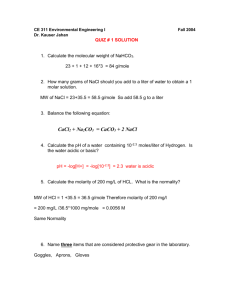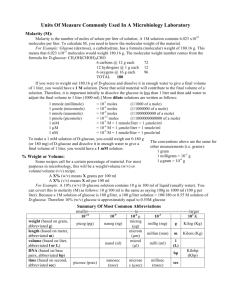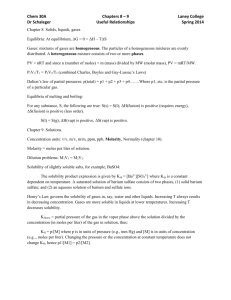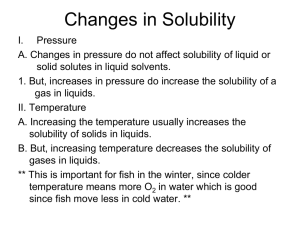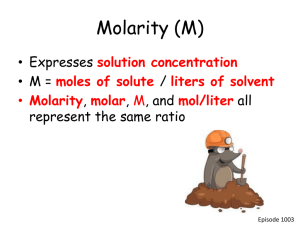Solutions and Molarity
advertisement
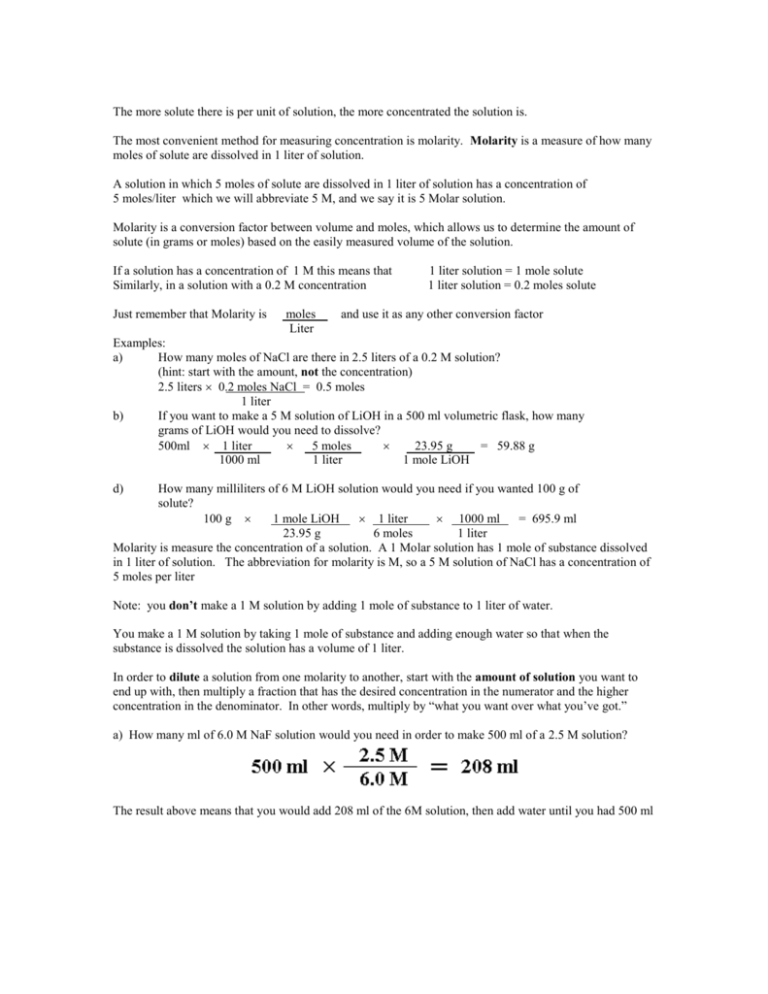
The more solute there is per unit of solution, the more concentrated the solution is. The most convenient method for measuring concentration is molarity. Molarity is a measure of how many moles of solute are dissolved in 1 liter of solution. A solution in which 5 moles of solute are dissolved in 1 liter of solution has a concentration of 5 moles/liter which we will abbreviate 5 M, and we say it is 5 Molar solution. Molarity is a conversion factor between volume and moles, which allows us to determine the amount of solute (in grams or moles) based on the easily measured volume of the solution. If a solution has a concentration of 1 M this means that Similarly, in a solution with a 0.2 M concentration Just remember that Molarity is moles Liter 1 liter solution = 1 mole solute 1 liter solution = 0.2 moles solute and use it as any other conversion factor Examples: a) How many moles of NaCl are there in 2.5 liters of a 0.2 M solution? (hint: start with the amount, not the concentration) 2.5 liters 0.2 moles NaCl = 0.5 moles 1 liter b) If you want to make a 5 M solution of LiOH in a 500 ml volumetric flask, how many grams of LiOH would you need to dissolve? 500ml 1 liter 5 moles 23.95 g = 59.88 g 1000 ml 1 liter 1 mole LiOH d) How many milliliters of 6 M LiOH solution would you need if you wanted 100 g of solute? 100 g 1 mole LiOH 1 liter 1000 ml = 695.9 ml 23.95 g 6 moles 1 liter Molarity is measure the concentration of a solution. A 1 Molar solution has 1 mole of substance dissolved in 1 liter of solution. The abbreviation for molarity is M, so a 5 M solution of NaCl has a concentration of 5 moles per liter Note: you don’t make a 1 M solution by adding 1 mole of substance to 1 liter of water. You make a 1 M solution by taking 1 mole of substance and adding enough water so that when the substance is dissolved the solution has a volume of 1 liter. In order to dilute a solution from one molarity to another, start with the amount of solution you want to end up with, then multiply a fraction that has the desired concentration in the numerator and the higher concentration in the denominator. In other words, multiply by “what you want over what you’ve got.” a) How many ml of 6.0 M NaF solution would you need in order to make 500 ml of a 2.5 M solution? The result above means that you would add 208 ml of the 6M solution, then add water until you had 500 ml
